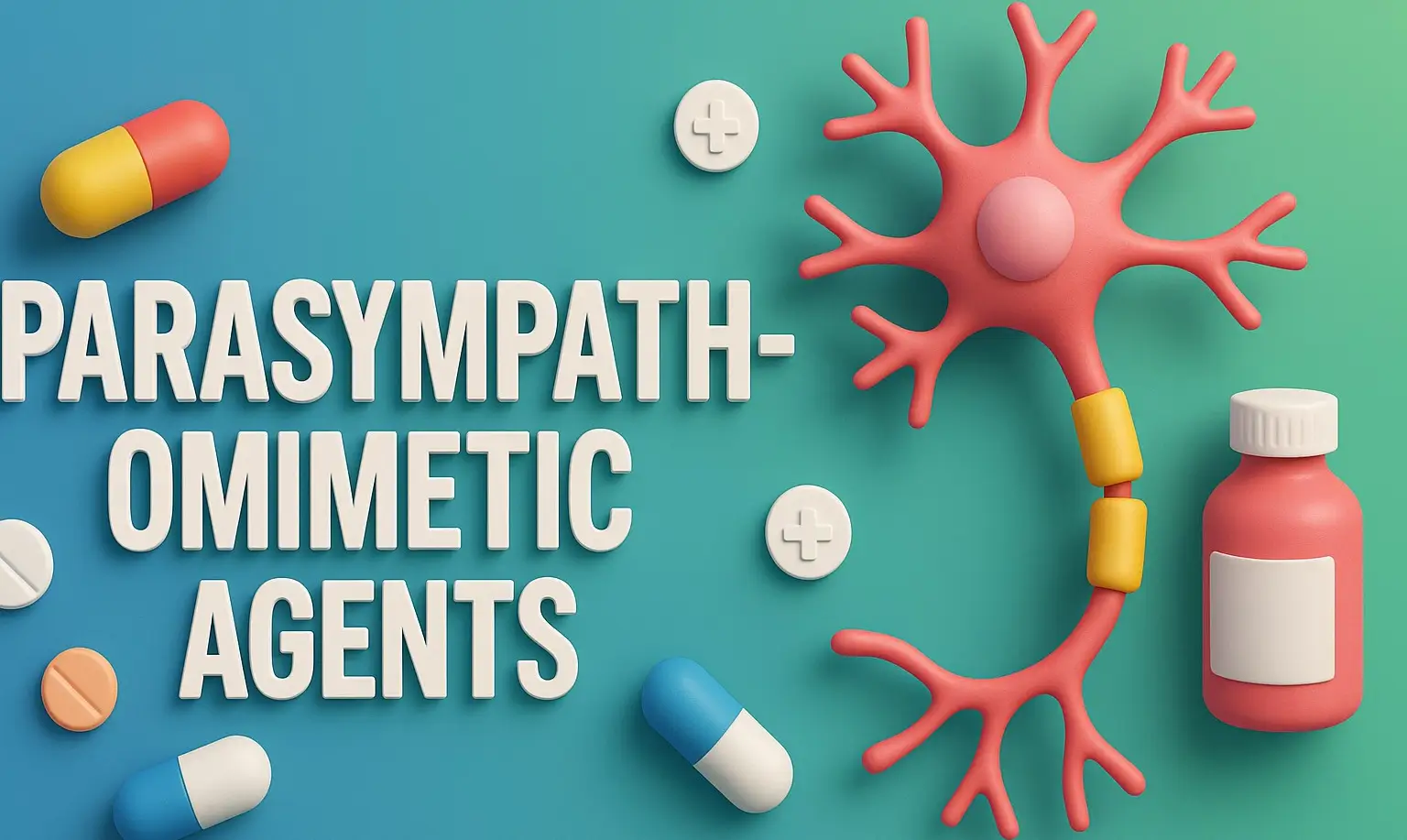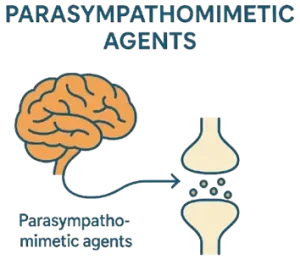- Parasympathomimetic agents are drugs that mimic the actions of acetylcholine (ACh) on parasympathetic nervous system

- These agents stimulate cholinergic receptors, resulting in increased secretions, smooth muscle contraction, slowed heart rate, and other parasympathetic effects.
- They are classified into two main groups:
- Direct-acting cholinergic agonists
- Indirect-acting cholinesterase inhibitors
- A third category includes cholinesterase reactivators, used to reverse irreversible inhibition of acetylcholinesterase.
SAR of Parasympathomimetic Agents
- Direct Acting Parasympathomimetics (Cholinergic Agonists)
- Quaternary ammonium group is essential for activity.
- The size of the alkyl groups on the nitrogen should not exceed a methyl group for optimal activity.
- Ester group is required for muscarinic activity; modification affects hydrolysis rate and selectivity.
- The distance between the nitrogen and the oxygen (O–C–C–N) must remain two-carbon units (ideal).
- β-methyl substitution enhances selectivity for muscarinic receptors and resists hydrolysis by cholinesterase.
Examples:
- Acetylcholine, Carbachol*, Bethanechol, Methacholine, Pilocarpine.
Click Here to Watch the Best Pharma Videos
Advertisements


